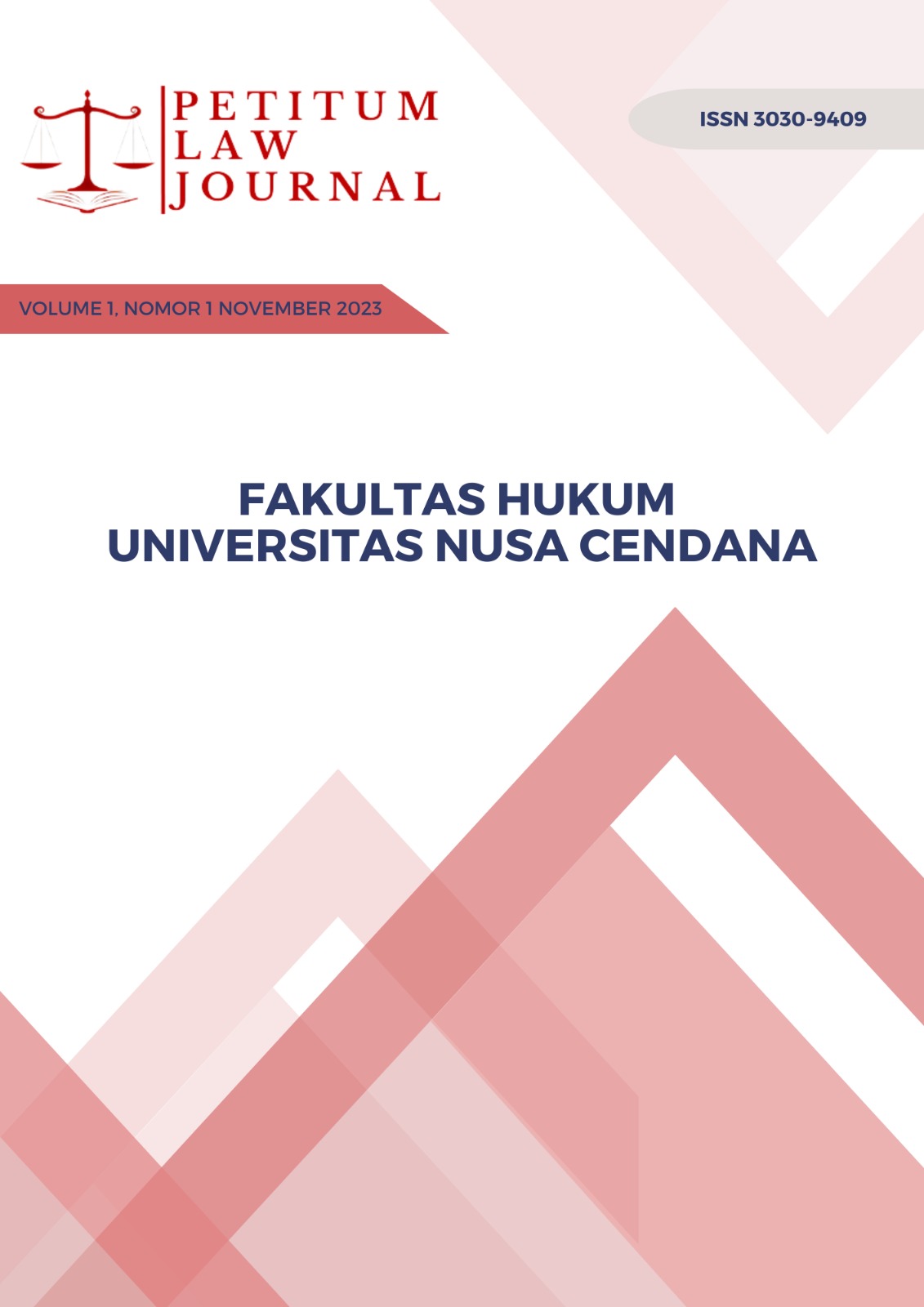PERLINDUNGAN HUKUM TERHADAP POTENSI INDIKASI GEOGRAFIS TENUN IKAT AMARASI DI KECAMATAN AMARASI BARAT KABUPATEN KUPANG
Main Article Content
Abstract
East Nusa Tenggara has many kinds of cultural riches, one of which is woven cloth crafts. There are still many areas in East Nusa Tenggara that have not registered woven fabrics to obtain a Geographical Indication certificate, one of which is Amarasi ikat weaving. Amarasi ikat weaving has a variety of different motifs which are implied by various stories, messages of ancestral cultural legends. In this way, it can be seen that there is potential for Amarasi ikat weaving that must be protected. This research aims to determine the legal protection for the potential of Geographical Indications for Amarasi ikat weaving and also to find out the role of local governments in encouraging the potential of Geographical Indications for Amarasi ikat weaving. The research method used is the Empirical Juridical Law research method, which is a type of research that examines law and reality in society. The conclusion of this research is Potential Geographical Indications must be registered as Geographical Indications in accordance with applicable laws and regulations. Because it is constitutive, so to have this certificate, potential Amarasi Ikat Weaving products must be registered through the Directorate General of Intellectual Property. Once registered, legal protection for registered Geographical Indications is preventively regulated in Article 21 paragraph (1) part d and Article 56, and repressively regulated in Article 67, Article 68, Article 69. And The government, in this case the NTT Law and Human Rights Regional Office and the Kupang Regency Disperindagkop, are working together to encourage the potential of Amarasi Ikat Weaving to obtain a Geographical Indication certificate, by establishing a Geographical Indication Protection Society (MPIG), outreach and distribution knowledge related to Geographical Indications and preparing description documents, identifying whether there are still craftsmen who still preserve Amarasi ikat weaving, and supporting these weaving groups by providing facilities and guidance.

